Minimum Energy Efficiency Requirements
Building Envelope
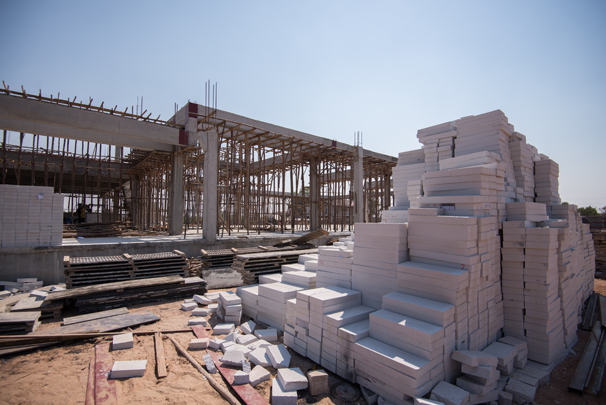
Opaque construction materials and their thermal properties including thermal conductivity, specific heat, density along with thickness; fenestration U-factors, solar heat gain coefficients (SHGC), visible light transmittance (VLT) and building envelope sealing documentation; overhangs and side fins, building envelope sealing detailss, solar zone area
Heating, Ventilation, and Air Conditioning
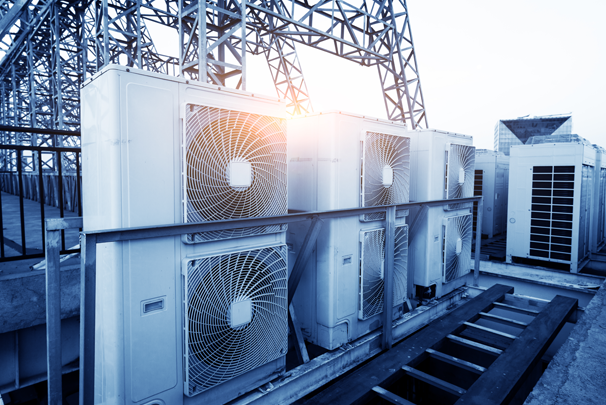
System and equipment types, sizes, efficiencies, and controls; economizers; variable speed drives; piping insulation; duct sealing, insulation and location; solar water heating system; requirement for balance report
Interior and exterior lighting

lighting schedule showing type, number, and wattage of lamps and ballasts; automatic lighting shutoff, occupancy sensors, and other lighting controls; lamp efficacy for exterior lamps
Electrical power and motors

Electric schedule showing transformer losses, motor efficiencies, and power factor correction devices; electric check metering and monitoring system
Renewable energy systems
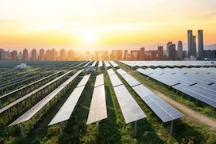
System peak installed capacity, technical specifications, solar zone area
Energy Conservation Building Code (ECBC) for Commercial Buildings
Bureau of Energy Efficiency had launched the Energy Conservation Building Code (ECBC) 2007 to establish minimum energy performance standards for buildings in India.
In June 2017, ECBC 2017 was launched which provides existing as well as futuristic advancements in building technology to further reduce building energy consumption and promote low-carbon growth beyond the codes notified under ECBC 2007.
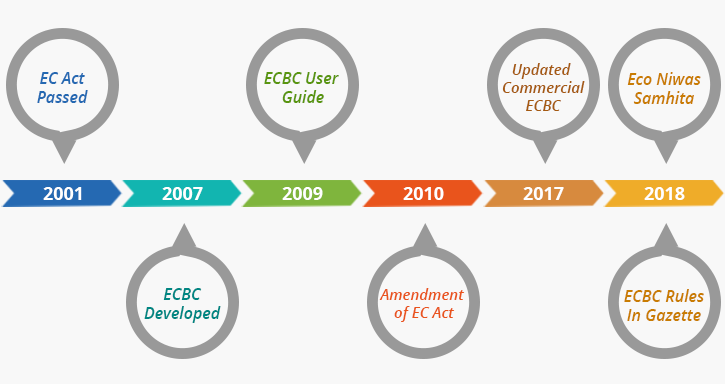
Program Overview
The Code is applicable to buildings or building complexes that have a connected load of 100 kW or greater or a contract demand of 120 kVA or greater and are intended to be used for commercial purposes. Until March 2019, while 13 states & 1 UT have made ECBC mandatory for commercial buildings through notification in their state gazettes, another 10 states are in advanced stages of making it mandatory.
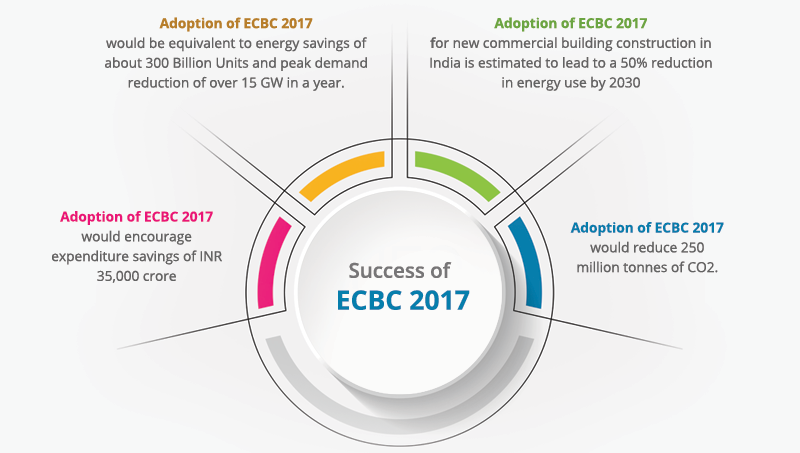
There are 6 types of buildings classified under ECBC:

ECBC 2017 is technology-neutral. Energy efficiency requirements have been framed to provide architects and engineers artistic and technical freedom as long as minimum efficiency requirements are fulfilled. Provisions for the installation of renewable energy generation systems is mandatory in ECBC 2017. Passive designs strategies like daylight and shading are also mandatory in ECBC 2017. Additional parameters included are related to renewable energy integration, ease of compliance, inclusion of passive building design strategies and, flexibility for the designers.
Also takes into account the five climates zones (Hot Dry, Warm Humid, Temperate, Composite and Cold) present in India. The National Building Code of India 2016 (NBC) is the reference standard for lighting levels, heating, ventilating, and air conditioning (HVAC), thermal comfort conditions, natural ventilation, and any other building materials and system design criteria addressed in this Code.
Level of Compliance of Buildings
ECBC 2017 is one of the first building energy codes to recognize beyond code performance. One of the major updates to the code is inclusion of incremental, voluntary energy efficiency performance levels. In order to measure the level of compliance of buildings with the code, a parameter – energy performance index (EPI) has been defined. EPI is defined as the ratio of the annual energy consumption (in kWh) and total built up area (excluding unconditioned basements).
For compliance the EPI shall be calculated based on either of below approaches:
- Prescriptive Method
- Building Envelope trade-off method
- Total System Efficiency Method
- Low Energy Comfort Systems
- Whole Building Performance Method
There are now three levels of energy performance standards in the code. In ascending order of efficiency, these are ECBC, ECBCPlus and SuperECBC. The adherence to the minimum requirements stipulated for ECBC level of efficiency would demonstrate compliance with the code. Other two efficiency levels are of voluntary nature.
ECBC Building
ECBC Buildings shall demonstrate compliance by adopting the mandatory and prescriptive requirements listed under ECBC Compliant Building requirements in the code for all components of building systems, or by following the provisions of the Whole Building Performance (WBP) Method. Such a building is 20% more efficient than conventional building.
ECBC+ Building
ECBC+ Buildings shall demonstrate compliance by adopting the mandatory and prescriptive requirements listed under ECBC+ Compliant Building requirements in the code for all components of building systems, or by following the provisions of the Whole Building Performance (WBP) Method. An ECBC+ building is 30-35% more efficient than conventional building.
Super ECBC Building
Super ECBC Buildings shall demonstrate compliance by adopting the mandatory and prescriptive requirements listed under Super ECBC Compliant Building in the code for all components of the building system, or by following the provisions of the Whole Building Performance (WBP) Method. A Super ECBC building is 40-45% more efficient than conventional building.
Methodology adopted to calculate the savings under ECBC
In order to measure the level of compliance of buildings with the code, a parameter – energy performance index (EPI) has been defined. EPI is defined as the ratio of the annual energy consumption (in kWh) and total built up area (excluding unconditioned basements). There are total 117 buildings across India that are either in the discussion stage, design stage, construction stage or have completed their construction as per ECBC guidelines across 24 states in India.
Details of buildings covered under ECBC from 2022-2023
This scheme is still under the voluntary stage. However, 13 states have made ECBC mandatory for commercial buildings through notification in their state gazettes, another 11 states are in advanced stages of making it mandatory.
Category of buildings covered in ECBC
Estimation of Energy Savings:
In order to calculate the energy (electrical) savings, the difference between the conventional EPI and proposed EPI of the respective buildings are considered, which is then multiplied by the total built up area in square meters (sqm). The EPI benchmarks are as per the approved guidelines under ECBC programme and conventional EPIs are calculated using % Saving of ECBC (as per IECC under USAID ECO-III project) over and above the baseline EPI.
In order to calculate the reduction in the total CO2 emission, the conversion factor of 0.71 kg CO2/kWh for electricity is considered. The total energy (electrical) saved under ECBC program is 0.099 BU and the total reduction in CO2 emission is 0.070 MtCO2 for year 2022-23.
